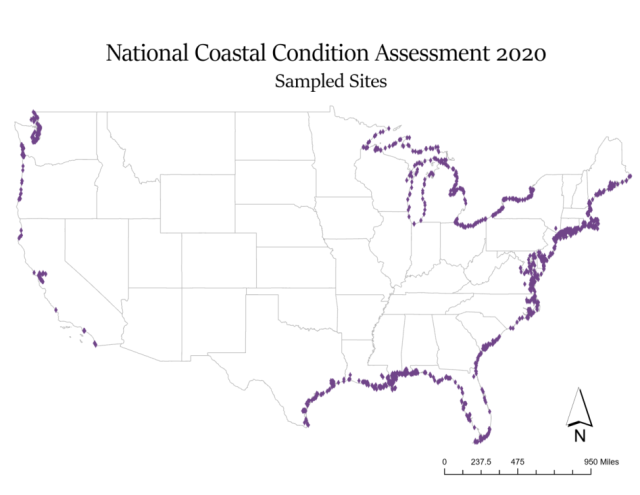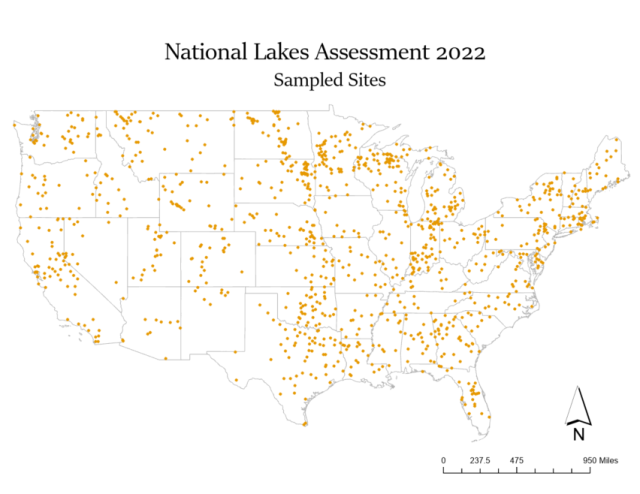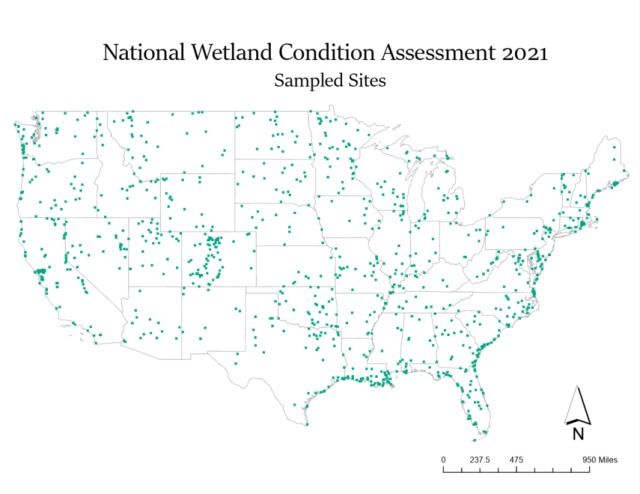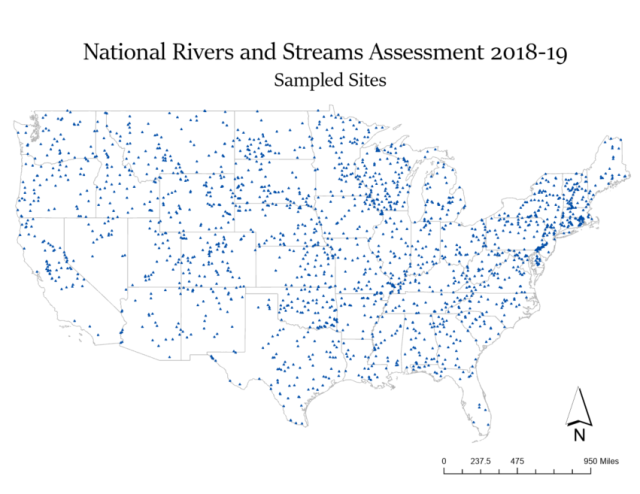What Waters are Included in the National Aquatic Resource Surveys?
Each of the National Aquatic Resource Surveys (NARS) focuses on a particular waterbody type: coastal waters, lakes, rivers and streams, or wetlands. The descriptions of each of these resources are provided below.
National Coastal Condition Assessment (NCCA)
National Lakes Assessment (NLA)
National Rivers & Streams Assessment (NRSA)
National Wetland Condition Assessment (NWCA)
National Coastal Condition Assessment (NCCA)

Both marine and Great Lakes coastal waters are included if they meet the following criteria:
Marine
- All coastal waters of the United States from the head-of-salt to confluence with ocean including inland waterways and major embayments such as Florida Bay and Cape Cod Bay.
- Head of salt is generally defined as < 0.5 practical salinity units (psu) and represents the landward/upstream boundary.
- The seaward boundary extends out to where an imaginary straight line intersecting two land features would fully enclose a body of coastal water.
- All waters within the enclosed area are defined as estuarine, regardless of depth or salinity.
Great Lakes
- U.S. Great Lakes shoreline area within 5 km from shore and waters 30 meters or less in depth.
- This uniquely “coastal” land-water interface zone includes: river mouths, open and semi-enclosed bays, embayments, and the more open waters adjacent to shorelines.
- It does not include the connecting channels of the Great Lakes (between lakes and the St. Lawrence River outlet).
EPA used a sample frame derived from prior National Coastal Assessments (developed by the Office of Research and Development (ORD) Gulf Breeze Ecology Division) and enhanced this using information from the National Oceanic and Atmospheric Administration (NOAA) as well as several states.
The NCCA Great Lakes sample frame was determined from existing standard GIS medium vector shoreline coverage from NOAA.
For more information: NCCA Design Documents
Special studies were undertaken in Hawaii, several U.S. Territories, and National Park Service lands in the Great Lakes.
National Lakes Assessment (NLA)

For the NLA 2012, 2017 and 2022, waterbodies were included if they met the following criteria:
- Natural or man-made freshwater lake, pond or reservoir
- >2.5 acres (1 hectare)
- At least 3.3 feet deep (1 meter)
- Minimum of a quarter acre (.1 hectare) open water.
For the NLA 2007, waterbodies were included if they met the following criteria:
- Natural or man-made freshwater lake, pond or reservoir
- >10 acres (4 hectare)
- At least 3.3 feet deep (1 meter)
- Minimum of a quarter acre (.1 hectare) open water.
EPA used the National Hydrography Dataset (NHD) to select lakes.
For more information: NLA Design Documents
National Rivers & Streams Assessment (NRSA)
Waterbodies included in NRSA 2008-09, 2013-14 and 2018-19 met the following criteria:
-
Map of sites sampled during NRSA 2018-19 - Head-of-salt is generally defined as < 0.5 practical salinity units (psu) and represents the landward/upstream boundary.
The Great Rivers, such as the Mississippi and Missouri Rivers, were included, along with run-of-the-river ponds and pools. Reservoirs were excluded.
EPA used the National Hydrography Dataset (NHD) to select rivers and streams.
For more information: NRSA Design Documents
National Wetland Condition Assessment (NWCA)

NWCA includes tidal and nontidal wetlands within the conterminous U.S. with rooted vegetation and, when present, shallow open water less than 1 meter in depth, that are not currently being used for production of crops.
EPA uses the U.S. Fish and Wildlife Service's National Wetland Inventory (NWI) to select wetland sites for sampling.
For more information: NWCA Design Documents

